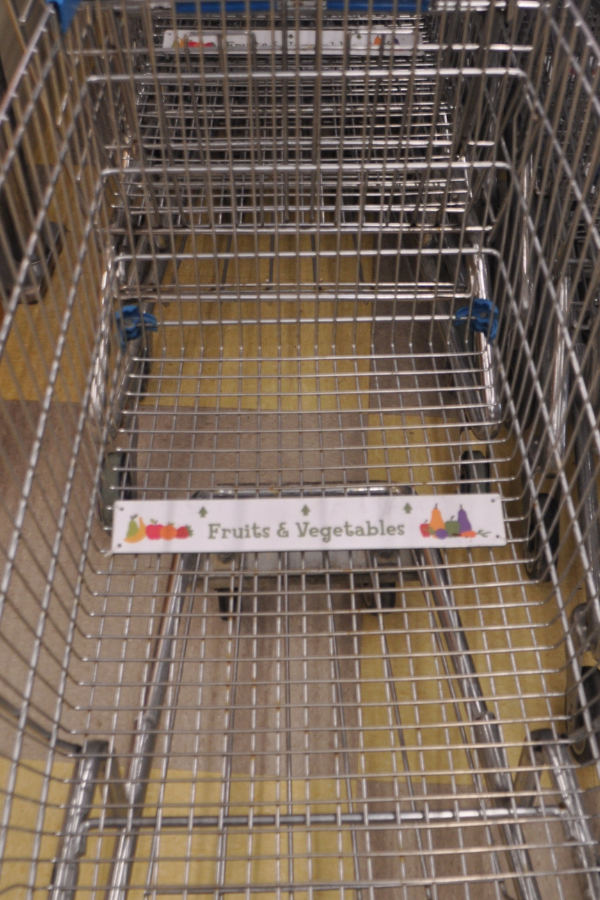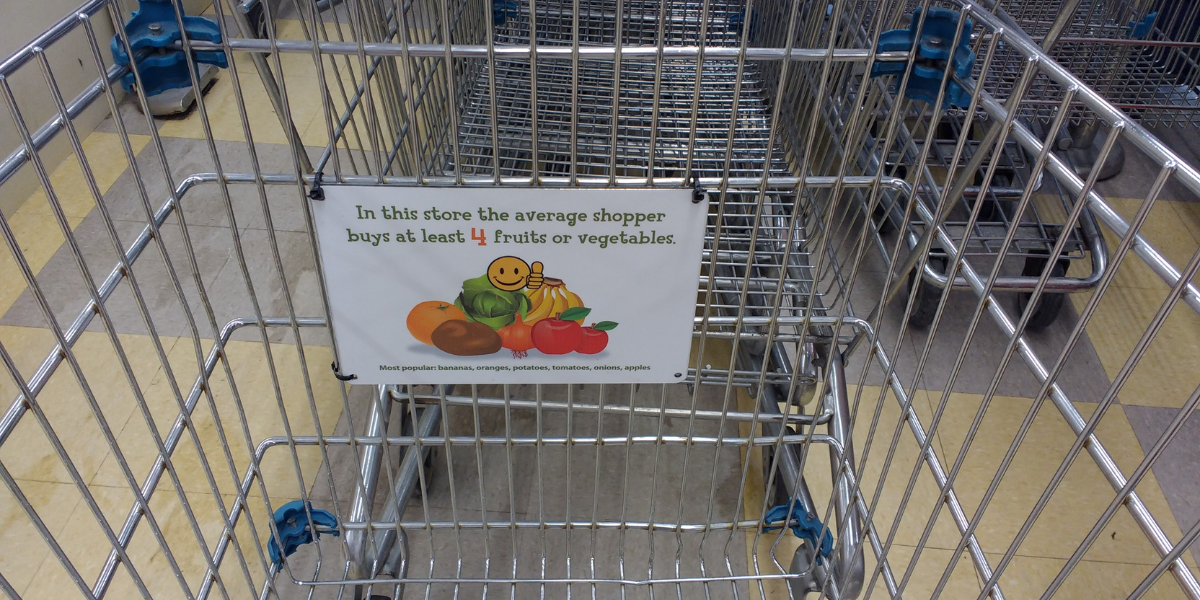A healthy diet complete with plenty of fruits and vegetables is an important contributor to reaching and maintaining a healthy body weight. It is also protective against many chronic diseases such as cardiovascular disease, type 2 diabetes, and cancer.
Despite these health benefits, the majority of Canadians are not consuming enough fruits and vegetables. While Canada’s Food Guide (CFG) encourages individuals of all ages to include plenty of fruits and vegetables in meals and snacks — four to eight servings a day for children, and seven to ten servings a day for adults depending on age and sex — only about one in five Canadians met or exceeded CFG recommendations. Some reports suggest as few as one in 10 Canadian children are adhering to these recommendations.

Grocery stores are one example of a private sector setting that can have a positive role in influencing the products, services, and options available to local residents. Previous attempts to encourage customers to buy more produce have seen mixed results. Some studies have shown that the use of interactive displays and brochures were not enough to influence consumers’ buying behaviours on their own. However, previous research has not extensively explored the context of locally owned grocery stores in more rural areas of Canada. These residents often face additional barriers to healthy eating such as limited availability and higher prices for fresh produce.
“Healthy eating is an individual behaviour but there are many internal and external factors – such as biological, psychological, cultural, and social factors – that influence what we eat," says Dr. Shazhan Amed.
"Effective health promotion and childhood obesity prevention efforts have to involve the entire community, working together to address the barriers families face to eating healthy and being active."
“By taking a coordinated approach children and families see consistent messaging and are surrounded by healthy options, making that community a healthier place for kids to live, learn and play."
Dr. Amed is the founder and lead of the Live 5-2-1-0 initiative, BC Children’s Hospital’s Type 2 diabetes prevention initiative that partners with communities across BC to engage a range of community stakeholders (e.g., in local government, health, education, business) to share the evidence-based Live 5-2-1-0 message and create healthier environments for children and families.

In collaboration with partners in a Live 5-2-1-0 community, Dr. Amed, Selina Suleman, Dr. Molly Sweeney-Magee, Susan Pinkney, Kimberly Charbonneau, Kelly Banh, and Dr. Ilona Hale conducted a study to address these gaps and find more effective ways to increase consumers’ produce purchases at a grocery store in the rural Kootenay region of British Columbia. They primarily used nudge interventions, which are factors that alter an individual’s behaviour in a predictable way without restricting one’s options when making decisions. In this case, the nudge interventions were grocery cart dividers that created designated space for produce, and a plaque on the cart with an informational message about typical fruit and vegetable purchasing practices in the store.
This study found that these nudge interventions were effective in increasing the purchase of produce in store. While the implementation of grocery cart dividers did not see significant impacts on customers’ produce purchases alone, this nudge in combination with the addition of informational cart plaques led to a consistent and sustained increase in produce sales relative to total sales over the course of the study.

"Our study shows that implementing these simple changes can be a feasible, relatively low-cost way to promote fruit and vegetable purchases while benefiting produce sales in a locally owned food business," says Dr. Amed.
While this research did show that these nudge interventions were effective in getting consumers to buy more produce, further research is needed to see if this leads to an increase in the actual consumption of the produce customers bought.
Read more in “Evaluation of two social norms nudge interventions to promote healthier food choices in a Canadian grocery store,” BMC Public Health.




